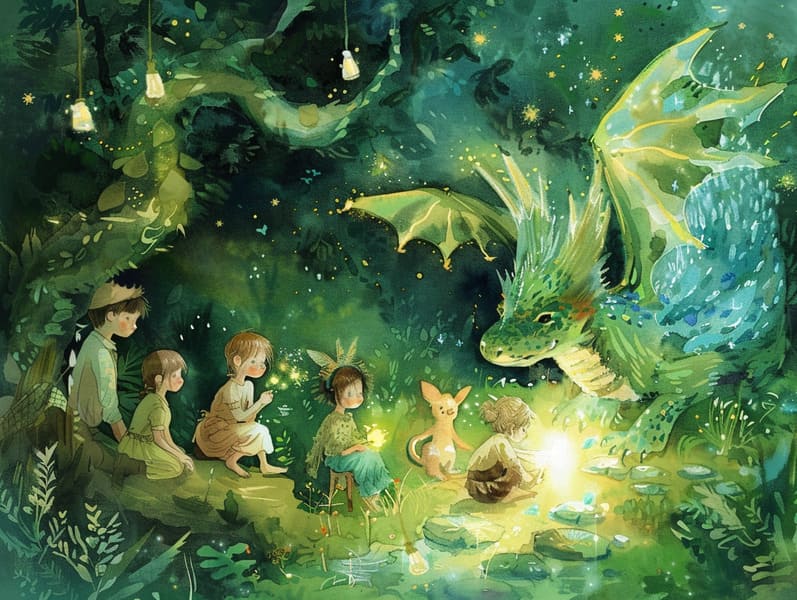The Creation of Mythical Fairy Tales with the Timeless Spell.
The Creation of Mythical Fairy Tales with the Timeless Spell.
Blog Article

Short fairy tales have ancient roots. These tales have been conveyed from one generation to the next millennia before they were ever written down. They came from a variety of traditions, including American traditions. They were initially passed along among grown-ups, often carrying themes and messages aligned with the societal norms and beliefs of the time.
Jacob and Wilhelm Grimm, Jacob and Wilhelm Grimm, were among the first to compile and publish many of these beloved tales. Their compilation, "Grimm's Folk Tales," included narratives like "Cinderella," "The Story of Hansel and Gretel," and "Little Snow White," which have since become hallmarks in the world of famous fairy tales. Similarly, the Danish author's enchanting fairy tales, such as "The Mermaid," and "The Ugly Duckling," have won hearts worldwide, ensuring their place in the pantheon of beloved fairy tales.
Though they are old, these tales remain as significant as ever, especially as children's bedtime stories. These delightful tales are now available in various formats, including colorful picture books, enchanting animations, and digital storybooks.
Their persistent charm can be ascribed to several whimsical characteristics:
Crucial Morals: Ancient fairy tales often impart important moral lessons. Tales like "The Wolf and the Liar" teach the importance of truth, while "The Tortoise and the Hare" exemplify the qualities of steadfastness and unassuming nature. These narratives offer the young clear distinctions between ethical and unethical, forming their moral compass in a gentle yet significant way.
Warmth and Understanding: Classic fairy tales frequently present individuals facing struggles and tests, fostering readers to identify with their struggles and encourage their triumphs. For instance, "Beauty's Beast" illustrates the benefit of valuing inner qualities to perceive the true nature of a individual, building sympathy and recognition.
Cultural Awareness: Many old fairy tales are deeply ingrained in the cultural contexts from which they originated. Delving into these fairy tales can provide captivating looks into different customs, strengthening a sense of world appreciation and appreciation.
Inventiveness and Fantasy: The magical elements in classic fairy tales—enchanted forests—engender children’s visions and dreams. These fairy tales carry readers to mythical realms, invigorating inventive dreams and a sense of amazement that endures a lifetime.
Timeless fairy tales are not only charming but also edifying. They act as magical tools in enhancing various intellectual and emotional capacities in children. When ancient fairy tales are told out loud, they develop verbal skills by teaching new lexicon and detailed sentence structures. This practice also cultivates listening abilities and mental focus, as little ones keep up with the story, ready to see what happens next.
Furthermore, conversing about the themes and characters of traditional fairy tales can promote reasoning skills and critical thinking. Young readers learn to recognize patterns, anticipate outcomes, and comprehend cause and effect. These analyses also encourage little ones convey their thoughts and feelings, contributing to their emotional intelligence.
In today’s high-tech era, the existence of digital fairy tales has made these stories more reachable than ever. Websites and digital apps supply extensive collections of bedtime fairy tales that can be seen or heard anytime, anywhere. Fairy tales voiced are particularly well-liked, supplying an engaging way for children to savor these alluring stories. Read-aloud stories and read-to-me stories move characters and settings to life, often augmented by fantastical background sounds and soundtracks read more that augment the storytelling experience.
The timeless charm of timeless fairy tales lies in their ability to change to current times while keeping hold of their core messages. Contemporary renditions of these narratives often bring in more inclusive protagonists and modern settings, making them understandable to today’s audience. However, the basic principles of fortitude, goodness, and fair-mindedness remain unchanged, continuing to influence young readers of all ages.
Ancient fairy tales also offer a sense of protection and comprehensibility. They disclose a ordered narrative with a obvious beginning, middle, and end, often concluding with the wrap-up of conflicts and the triumph of good over evil. This certainty can be reassuring for the young, granting a sense of firmness in an always shifting world.
Old fairy tales continue to enchant and edify new generations, maintaining their charm and significance in modern society. As children's night stories, they feature a perfect blend of allure and teaching, boosting moral values, empathy, and creativity. The accessibility of online storybooks and the popularity of fairy tales narrated make sure that these old fairy tales remain obtainable to new generations.
By maintaining and telling these stories, we continue to value the rich tapestry of storytelling and cultural heritage. Whether you are reading a richly illustrated book, discovering a cyber library, or listening to an audiobook, the spell of ancient fairy tales is always within reach. These tales illustrate of the unchanging presence of fairy tales and its ability to tie us across generations and cultures.
Whether you are discovering a vividly illustrated book, browsing a web collection, or listening through an voice book, the mystique of ancient fairy tales is always within reach.
These tales teach us of the consistent nature of fairy tales and its ability to tie us across time and space, forming a connection that fascinates and enlightens alike.